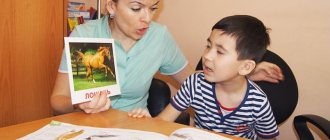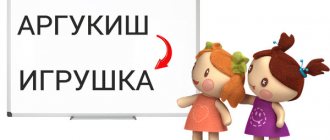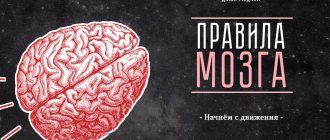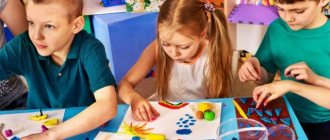Mnemonics for beginners is a system of various methods that helps to remember information using various associations and is used in teaching children from preschool age. This technique uses previously acquired knowledge to create a chain of connections. Thanks to such logical series, you can easily remember information that is difficult to perceive.
There are many mnemonic techniques. For example, Cicero’s method is based on spatial imagination, while Aivazovsky’s method works by training visual memory. Number sequences, foreign words or complex terms are easier to remember with the help of consonant or familiar words and numbers.
In a time when there was no written language, ancient priests and storytellers had to memorize enormous amounts of information. With the advent of the first texts put on paper, the art of using mnemonics did not lose its relevance, because the raw materials for writing them were very expensive. Even in Ancient Greece, notes were made using mnemonics. The art of associative memorization was mastered by the monks of the Middle Ages. At all times, people who could quickly remember and store useful and interesting knowledge in their heads were valued.
Pros and cons of mnemonics
Mnemonics are actively used in teaching children. For example, one of the most famous phrases for studying the sequence in the color spectrum is “Every Hunter Wants to Know Where the Pheasant Sits.” It is she who helps to accurately tell how a rainbow “works.”
The role of methodology in the development of children:
- helps you remember information quickly and for a long time;
- improves memory and attentiveness;
- develops speech, expands vocabulary and horizons, teaches how to pronounce sounds and words correctly;
- forms logical and imaginative thinking;
- improves imagination, intellectual and creative abilities;
- develops character, teaches sociability, helps to overcome isolation and shyness.
When used correctly, mnemonics have very few disadvantages.
- At the initial stage of use, children have a small vocabulary, so it can be difficult for them to work using this method.
- There is no need to abuse the method and use it in cases where it is too easy to understand the properties and remember the signs - this hinders the child’s development.
- Sometimes it is not possible to use the technique. For all-round development, it is necessary to teach the child to learn information mechanically; this skill will also be useful in the future.
The human brain consists of two hemispheres. The left is responsible for logic and speech, and the right helps to perceive different colors and form images using the imagination. When using mnemonic techniques, both halves are activated simultaneously. As a result, thought processes bring maximum benefit in the form of acquired knowledge.
From what age is it used?
Teaching children using mnemonics can begin from a very early age. Getting to know exercises for children starts with simple techniques.
First, they use mnemonic squares, which can be introduced to children at the age of three. In the first lessons, children study simple images that represent one word, phrase or simple phrase. You can place pictures in a square and learn poems with movements.
Later, at 4-5 years old, children become familiar with mnemonic tracks - systematized pictures of four drawings. With the help of such images, the concept of sequences is formed. Thanks to group illustrations, you can easily tell a short story, remember the steps of washing your hands, the process of dressing or washing your face.
Children aged 6-7 years begin to study mnemonic tables that allow them to perform more complex actions:
- retell various works;
- memorize poems and complex words;
- guess and make riddles;
- find rhymes for words;
- invent fairy tales or stories;
- distribute objects into groups according to certain characteristics;
- study numbers;
- become familiar with the basic rules of life safety and behavior in various places, and methods of self-service.
Children learn to express their thoughts correctly and beautifully and use new words in speech. Attention and intelligence develop, the ability to highlight the main thing and compare improves.
Stages of working on a poem:
1. The teacher reads the poem expressively.
2. The teacher reports that the child will now learn this poem by heart. Then he reads the poem again using the mnemonic table.
3. The teacher asks questions about the content of the poem, helping the child understand the main idea.
4. The teacher finds out which words are incomprehensible to the child and explains their meaning in a form accessible to the child.
5. The teacher reads each line of the poem separately. The child repeats it using a mnemonic table.
6. The child recites a poem based on a mnemonic table.
Features of application
You can achieve results during mnemonics classes if you follow the basic rules for using the technique.
- Subsequence. You cannot start classes with difficult tasks. First they work with mnemonic squares, single images, then with mnemonic tracks and mnemonic tables.
- Rationing. Children are not shown more than two tables per day, and the number of images in each block should be no more than 9 pieces. Too much information is difficult for a child to absorb, so classes will be ineffective.
- Colorfulness. The pictures should interest the child in their appearance. They use bright colors, rich and expressive images. Tables in black and white will not be able to attract the attention of children and have the desired impact; they can only be used for children of older preschool age.
- Emotionality. Children should feel the positive energy of such activities.
- Diversity. Pictures or series of images for one lesson should be on different topics. Guys will quickly lose interest in the same type of training. It is also advisable to select tables that require different actions. For example, the first pictures help to remember the sequence of food intake, and the next group helps to tell about how insects move.
- No coercive measures: just a game. Classes can only be conducted when children are involved in the process with pleasure and interest. Everything should happen in a playful way. If the children's attention wanes, it is better to stop the lesson and continue at another time.
It is enough to adhere to these simple principles to achieve maximum learning results.
The use of mnemonics in FEMP for children of senior preschool age
Yulia Agapova
The use of mnemonics in FEMP for children of senior preschool age
In the modern educational system, much attention and interest is paid to the problem of intellectual development of children of senior preschool age , the development of cognitive interest and cognitive activity. A big role in this is played by mathematical development in preschool educational institutions in accordance with the Federal State Educational Standard.
Thanks to the rapid development of information technology, a new information environment of modern man is emerging. It is important for the teacher to organize the learning process so that the child actively engages with enthusiasm and interest during educational activities. In this regard, the educator is faced with the question of how to most correctly choose the methodology for teaching, developing and consolidating the acquired material.
The relevance of mnemonics for preschoolers is due to the fact that at this age figurative memory predominates in children , memorization often occurs involuntarily, and its productivity increases with visual reinforcement. Mnemonics helps speed up the memorization process in preschoolers , develop figurative, logical, associative thinking (including the ability to systematize, analyze, isolate parts, combine into pairs, groups, wholes, imagination, attention. The use of mnemonics techniques children's vocabulary and promotes the formation of coherent speech.Children acquire the prerequisites for self-education, the ability to conduct introspection, children become more liberated and independent [1] .
The formation of elementary mathematical concepts in children of senior preschool age certainly plays an important role in the personal and intellectual development of the child. It is important to teach your child to independently find the right solution, to think creatively and outside the box.
It is FEMP that forms the child’s memory and attention, develops flexibility of thinking, speech and imagination.
It is believed that the word " Mnemonics "
invented by Pythagoras of Samos
(6th century BC)
.
Mnemonics has the same root word - Mnemosyne . In Greek mythology, Mnemosyne is the goddess of memory and the mother of 9 muses, and the figurative meaning means memory. It is known that already in ancient Greece people successfully used mnemonic techniques . Using them , the ancient Greeks acquired the ability to quickly memorize very large, and often meaningless, material, demonstrating their skill in public speeches.
Mnemonics was studied , developed and taught by Giordano Bruno; Aristotle was interested in it and taught this art to his student Alexander the Great. Julius Caesar and Napoleon Bonaparte had phenomenal memory, based on mnemonics
, mnemonics were also .
A striking example of this is the Slavic alphabet. The names of all Cyrillic letters were invented for mnemonic purposes .
This means that since ancient times people have understood that mnemonics facilitate memorization and improve the retention of information.
Mnemonics - (from the Greek mnemonikon - the art of memorization)
- “this is a set of special techniques and methods that facilitate the memorization of information and increase the volume of memory through the formation of connections.”
V. A. Kozarenko defines “ Mnemonics ”
As an internal writing system, the process of forming connections, the generation process
(remembering)
is carried out according to recorded connections in the presence of appropriate stimuli. Without stimulation, the brain cannot create information [2].
Modern researchers A.K. Kolechenko, V.A. Kozarenko, M.A. Ziganov argue that the use of mnemonics in kindergarten classes allows children to more successfully master and remember new knowledge[3].
Modern pedagogy actively introduces psychological methods, techniques, and technologies into the educational process.
Mnemonics in pedagogy can be represented in the form of sensory-graphic diagrams, square blocks, collages, story composing schemes, subject-schematic models.
The use of this technology in preschool educational institutions should begin with the middle group, when of age . Since it is at this age a child’s visual-figurative memory predominates, and the memorization of information is involuntary, children at this age better remember events, facts, objects, phenomena that are close to their life experience [4].
In the modern world, the flow of information is growing very quickly; it literally falls like an avalanche on a person, including a preschooler . How to master all the information? What needs to be done to ensure that the acquired knowledge lingers in the child’s head for a long time? What can make the path of memorization easier? Not only teachers, but also many scientists are trying to find answers to these and other similar questions. It is quite obvious that mechanical memorization today can no longer cope with the amount of information that a preschooler needs to learn [5] .
Analyzing, I came to the conclusion that teaching mathematics is not so much a goal as a means of personal improvement and development. The process of cognition itself, even if it is motivated, should captivate the child, and not be a boring job of memorizing certain scientific postulates. Therefore, it becomes relevant to use such techniques that would help the child learn ways of understanding the world, ways of obtaining and processing information. It is important to develop the child’s general abilities, his intelligence, attention, and memory. In this case, mnemonics-methodology , which has long been included in the practice of teachers, came to the rescue [6].
Having studied the scientific literature, I carried out experimental work on the introduction of mnemonics into the general educational process.
I have developed and tested mnemonic tracks and mnemonic tables in the formation of elementary mathematical concepts in older preschoolers attending the preparatory group.
Based on the chosen technique, I set the following tasks:
children's vocabulary
2. Develop the ability to transform symbols into images (transcoding information)
.
3. To promote the development of children’s perception , reproduction, and ability to use technology .
4. Promote the development of basic mental processes - memory, attention, imaginative thinking;
5. Contribute to the development of the ability to work according to the image, according to the rules, listen to an adult and follow his instructions;
children’s creative abilities , the ability to draw up diagrams themselves and reproduce them.
To develop children’s skills in any information, I used the following , the most effective methods:
1. Method of associations - establishing associative connections between objects, finding “similarity”
in that at first glance it is completely different.
2. The “crocking”
(from the French croquis - drawing, diagram, sketch) (drawing letter)
.
3. Method using imaginative thinking (eidetism)
In order to introduce children to numbers , I used the association method . Using this method, children memorized numbers using the method of coherent associations or the “Hanger”
.
The hanger word method is based on visual representations; this method helps children remember the necessary information, which consists of any number of numbers, in a certain order.
The variation of numbers can be different, depending on how children encode this or that information.
To make it much easier for children to remember two-digit numbers and understand them, I developed and used this mnemonic table
Using a model of sticks (constituting 1 ten, it is easy to build a child’s familiarity with two-digit numbers. To form a correct idea of the structure of a two-digit number, you should always put tens on the left and ones on the right, but since we are using a mnemonic table , we placed the tens on the right in order to the encrypted image in the form of a picture was instantly superimposed on the ten model using a preposition.
Mnemonic table “Composition of numbers”
In the center of the table is the desired number, and along the diagonal, horizontal and vertical lines are two smaller numbers, which together add up to the desired number.
In order for children to learn to identify the numerical data of a task, practical actions and understand the meaning of the quantitative changes to which they lead,
complete substantive clarity is required.
For this purpose, I compiled mnemonic tracks for solving simple arithmetic operations. To begin with, in my mnemonic tracks I indicated the signs “+”
“-” “=”
. Then she removed the signs and the children independently came up with conditions for the problems and solved them. At the same time, visual pictures helped children structure their speech more competently, choose the right question for the problem and solve it.
By older preschool age, children accumulate experience in dividing into parts (in everyday life, games, construction)
.An everyday understanding of the whole as indivisible and the perception of each part of the whole as a new, independent object develops.
Using mnemonic tracks “Part and Whole”
Children in classes and independently used this technique.
Children they learned to perceive the whole not only as an undivided object, but also recreated from parts.
The parts obtained by dividing the whole with equal parts were compared by superposition. the mnemonic track for 20 seconds , and then divided the original figure into parts, identified and compared them.
Based on the ability to divide a whole into parts, I developed mnemonics “Geometric Problems”
.
Children independently established patterns, classified objects according to common and distinctive features, reasoned consistently, drew appropriate conclusions, and independently chose solutions.
Mnemonic table “Seasons”
Each month of a different season is encrypted by the first letter of the word. It becomes easier for children to remember the names of the months that belong to a certain time of year.
Mnemonic collage “Days of the week”
makes it clear to children that seven days is a week, and each day has its own name. Gives an idea of time: its fluidity, periodicity, name. Strengthens the ability to consistently name the days of the week, determine what day of the week is today, what it was yesterday, and what it will be tomorrow.
Mnemonic table – chain “Graphic dictation”
Forms the child's eye, strengthens visual memory; promotes the development of fine motor skills; development of stable, focused attention, development of visual-motor coordination, arbitrariness, rhythm and accuracy of movements; development of visual-spatial perception: analysis, synthesis; education of hard work and perseverance; development of skills to navigate on a sheet of paper.
The use of mnemonic tables and mnemonic tracks in free play activities adds playful and entertaining elements to mathematical material, arouses interest in children , facilitates and speeds up the memorization process, and forms techniques for working with memory and thinking that help children in a visual and accessible form.
The inclusion of mnemonic tables and mnemonic tracks in direct educational activities on the formation of elementary mathematical concepts for performing any task allows you to remember complex material, retain the interest of children , creates conditions for increasing the emotional attitude to the content of educational material, ensures its accessibility and awareness, promotes development children have basic mathematical concepts.
Literature:
1. Kozarenko V. A. Textbook of mnemonics . Memory system "Jor-dano"
. M.: Samizdat, 2007. - 350 p.
2. Kolechenko A.K. Encyclopedia of educational technologies: A manual for teachers. - St. Petersburg: KARO, 2002. - 368 p.
3. Marat Ziganov M. A., Kozarenko V. A. - MNEMOTECHNIQUES Memorization based on visual thinking M.: School of rational reading, 2000.-173 p.
4. Fateeva G.I. Characteristics of mnemonics as a method of developing thinking in children and adults [Text] // Current problems of pedagogy: materials of the IX International. scientific conf. (Moscow, June 2022)
. - M.: Buki-Vedi, 2022. - P. 3-5.
5. Konrad Boris “How to remember everything! Secrets of the world champion in mnemonics » LLC Publishing Group "Azbuka-Atticus"
, 2017
6. Chelpanov G. I. “On memory and mnemonics ”
https://elib.gnpbu.ru/text/chelpanov_o-pamyati-i-mnemonike_1903/go,0;fs,0/








